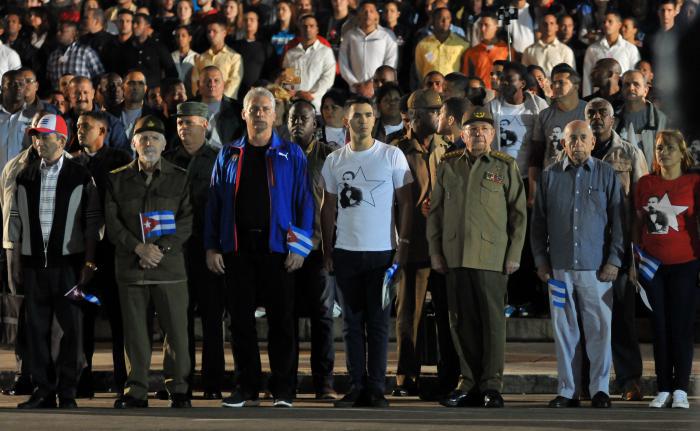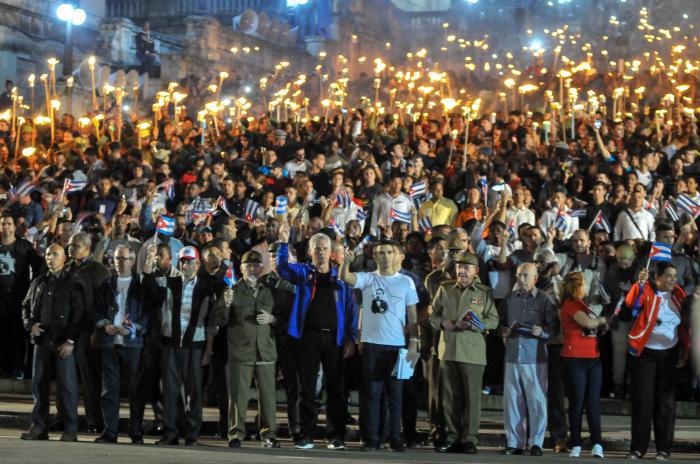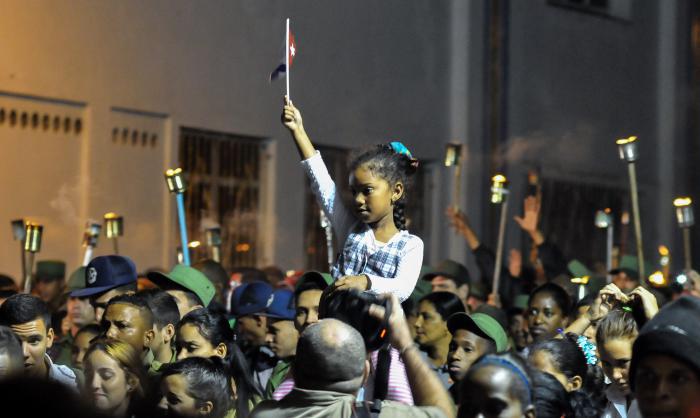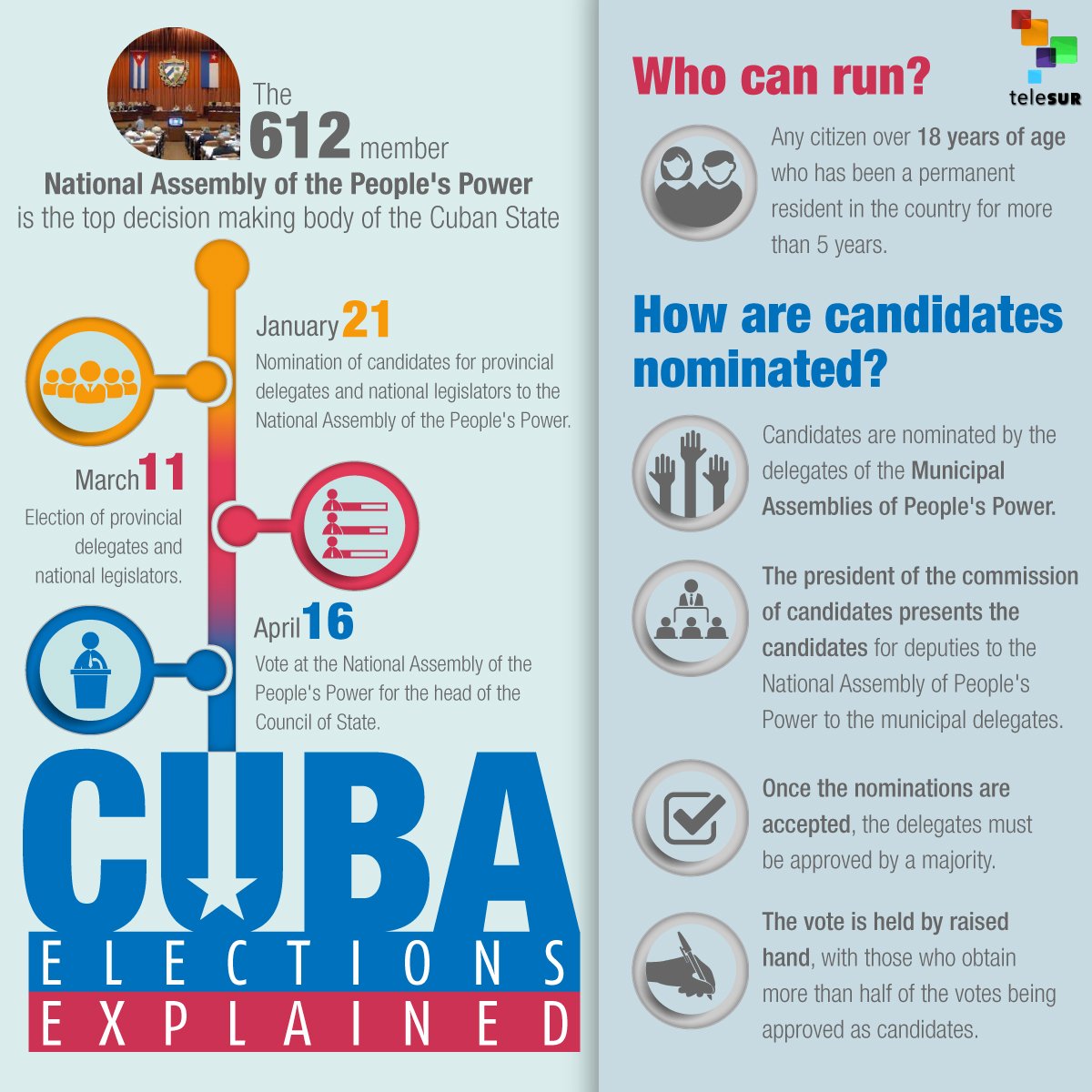A mega-project in the heart of Cuba
In its continued advance toward the province of Las Tunas, the East-West water diversion project is making a significant contribution to development, delivering water that will lead to greater economic and social changes
Author: Germán Veloz Placencia |
german@granma.cu
february 9, 2018 10:02:51

The Mayarí reservoir, a signature work of Cuban engineering. Photo: Juan Pablo Carreras
"…Foresight for which all will be thankful, in particular future generations, who will be obliged to live in a world where potable water will be an increasingly scarce and expensive resource.” Raúl Castro Ruz
MAYARÍ, Holguín.–The impressive mass of water in Mayarí reservoir (354 million cubic meters) and the dam that holds it back - unique in the country given its height and wall of impermeable concrete - make clear that the East-West Diversion is a mega construction project, evidence of the country's technical ability.
With the Nuevo Mundo Reservoir as its starting point, in the municipality of Moa, the complex network of tunnels, principal and secondary canals, tunnel-bridges, valves, outlets, and other components is projected to cross an extensive portion of the province of Holguín and terminate in the Juan Sáez Reservoir in Las Tunas.
Its size and engineering solutions, planned and already completed, confirm the Cuban state's determination to move water from areas with greater supplies to those less favored by nature.

Tunnel-bridges are an ingenious solution to moving water across variable terrain. Photo: Juan Pablo Carreras
The Engineering Services Enterprise affiliated with the Integrated Directorate of Diversion Projects (DIP), headquartered in Mayarí, is responsible for administering the huge investment project that includes six stages, scheduled successively.
A COMPLEX PROJECT
Technical complexities and other obstacles have slowed progress on the East-West Diversion. The first stage, begun in 2005 and concluded in 2009, resolved water supply problems for the city of Holguin's population and the resort area on the province's northern keys, which had been impacted by cyclical and severe drought conditions.
With the goal of supplying the provincial capital, the Nipe-Gibara diversion was constructed, carrying water from the Mayarí reservoir to Birán. From this reservoir water is directed to Nipe via the Nipe-Deleite canal, and then to the Gibara basin, with the help of three pumping stations located at key points, separated along the route.
The situation in the beach resort area changed dramatically with the completion of the conduit linking the Colorado and Naranjo reservoirs, which was followed by a connection to the Pesquero treatment plant.

Every segment of the diversion must meet technical standards. Photo: Juan Pablo Carreras
The second stage, also begun in 2005, was completed in 2012. This segment of the system begins at the Mayarí reservoir, in the municipality of the same name, and ends in the Birán Reservoir, within the municipality of Cueto. This conduit joins the Seboruquito and La Esperanza reservoirs.
The connection between the two storage basins was achieved with the construction of 10 kilometers tunnels, 18 km of canals, three canal-bridges, three archways, and some 100 engineering works.
The original budget projected was close to 550 million pesos, but the introduction of new technology and an increase in overall efficiency have allowed for savings of 40 million.
In an evaluation completed at the end of December 2017, with First Vice President and Party Political Bureau member Miguel Díaz-Canel Bermúdez on hand, the benefits produced thus far were outlined.
The Nipe-Gibara conduit has transported 28.6 million cubic meters of water to the city of Holguín, and the Colorado-Naranjo segment has sent the resort area another 3.16 million cubic meters.
To this is added the fact that the amount of water stored has reached 317 million cubic meters and the ability to divert it via the Nipe-Deleite canal, will allow for the irrigation of 12,800 hectares dedicated to agricultural production in general, including sugar cane. Of this total, 2,564 hectares have their supply conduits completed.

A second small hydroelectric plant alongside the Mayarí reservoir dam will begin operating this year. Photo: Juan Pablo Carreras
The Mayarí reservoir has put an end to floods in the municipal capital, helping to avoid considerable expenses for evacuations, shelters, and protection of people, animals, and different resources.
On the right side of the dam, a small hydroelectric plant was constructed and synchronized with the national grid on October 26, 2016, generating 23 gigawatts per hour through last December, saving the country 5,700 tons of fuel.
These benefits will continue to increase with the regular use of the facility and the termination this year of another plant of this type - with a slightly lower capacity - on the left side of the dam.
A CONTINUOUS, RATIONAL EFFORT
Launched in 2012, the third stage includes several components. Heading north is the Birán-Báguano canal, of which some 12 kilometers of the 28 projected have been completed. To be benefited are 13,400 hectares of agricultural land that will be irrigated.
To the east is the Mayarí-Levisa tunnel with a length of 18.5 kilometers, more than 10 of which have been completed. When the Levisa reservoir is constructed, it will allow for the diversion of 80 million cubic meters of water, from the river of the same name, to Mayarí reservoir.
The determination of construction workers is evident in progress being made on the Nipe-Deleite-Cosme-Herrera canal, critical to plans for this year, since it will supply the heart of the Cosme-Herrera agricultural pole, with a view toward providing irrigation for a future 2,000 hectares of rice fields.
The dynamic pace of work in the present stage reflects a certain correction, the adopting of a strategy focused on the physical progress of works, while organizing project teams with the goal of increasing constructive capacity, and shortening the completion timelines for components that will contribute to increasing food production.
Granma had access to records on progress in the Diversion-related Agricultural Development Program. Analyses revealed that, beginning in 2016, Mayarí, a municipality which had barely produced any legumes or grains at all in the past, has increased production 14.7 times over.
In the case of beans, as compared to 2011, yields were up 3.7 times over and corn 9.8 times.
No tradition of rice farming, harvesting, or processing existed in the area, contrasting sharply with the 1,500 tons sold over the last few years to the state enterprise for subsidized distribution.
Noteworthy is the fact that rice yields over the same period have averaged 4.2 tons per hectare, 50% greater than projections made in the project feasibility study.
A review of reports from Holguín's state sugar enterprise shows the growing impact of water diversion on the irrigation of cane fields in the municipalities of Báguano, Banes, and Cueto. The limited availability of water and efforts to promote its rational use have led to the construction of modern pumping stations, and the installation of underground drip irrigations systems, which join rolling and pivot sprinklers.
The reports indicate that, by the end of 2018, 2,000 additional hectares of cane fields will be under irrigation.
In its continuous advance toward Las Tunas, the East-West Diversion is laying the basis for development. Along with the water, other significant changes have arrived in the socio-economic environment.
If anyone would like to confirm this, they should consider a visit to Guaro, in Mayarí. Standing out, among all the projects underway in this predominantly agricultural area, is the factory producing derivatives of the nim tree, peanuts, sesame seeds, and sunflower seeds, as well as the rice mill, facilities that are encouraging a number of locales to pursue technical and professional training.
BACKGROUND
The East-West water diversion project emerged as a result of the Revolution's consistent water policy, implemented between 1959 and the end of the 80s, a period during which the country's storage capacity was increased by 29 million cubic meters, to reach more than nine billion.
• Fidel was always attentive to this critical issue and once the alarming risks of climate change had been evaluated, he developed the idea of diverting water from Cuba's nine easternmost provinces to the center of the island. Thus an extensive program of investment projects began, to make use of the voluminous quantities of water flowing down from the Sierra Maestra, the Nipe-Sagua-Baracoa range, and the Escambray mountains.
• Work began immediately, undertaken by enterprises affiliated with the Ministry of Construction, the National Institute of Water Resources, and the Military Constructions Directorate, but the arrival of the most difficult stage of the Special Period brought the effort to a halt. In Mayarí, Holguín, and Agabama, Sancti Spíritus, the first steps forward were taken.
• The project was re-initiated at the end of 2004, incorporating a new, more efficient conception. Considering the dramatic losses caused by drought that year in the provinces of Holguín and Camagüey, Fidel directed Army General Raúl Castro to re-activate the strategic diversion plan.
• After the relevant analyses, the Minister of Revolutionary Armed Forces issued an order to regroup the principal leaders, project managers, and forces who had worked on the original plan and established the Special Drought Mitigation Group, and the Diversion Projects Directorate (DIP) that would begin work in early 2005.
• This latter body created the Diversion Engineering Services Enterprise, which was charged with meeting specific needs, among them working on the projects underway to evaluate their environmental impact, and devise strategies to avoid affecting the population and resolve problems as quickly as possible.
SOCIAL WORKS COMPLETED AS PART OF THE DIVERSION PROJECT:
• Housing construction for the new settlements of Arroyo Seco, Las Cuevas, Seboruco, La Pedrona and La Yaya, created because their previous sites were inundated.
• A 280-meter bridge joining neighborhoods within the Arroyo Seco community, which were separated by the Mayarí Reservoir, and access to the municipality of Segundo Frente, in Santiago de Cuba was reestablished.
• A bridge in Arroyo Hondo, in the agricultural production pole of Chavaleta, in Mayarí, and more than 50 kilometers of roads.
RECENT SUGAR INDUSTRY INVESTMENTS ASSOCIATED WITH THE DIVERSION PROJECT:
Construction of five modern pumping stations
Erection and start-up of four underground drip irrigation systems serving 492.7 hectares
Erection and start-up of a rolling irrigation system on 137 hectares
Erection and start-up 59 pivot irrigation sprinklers
THE Diversion Engineering Services Enterprise WAS CREATED TO SUPPORT THE EXECUTION OF THESE PROJECTS:
East-West Diversion from the Nuevo Mundo Reservoir (Moa, Holguín) to the Juan Sáez in Las Tunas
North-South Diversion in the province of Guantánamo, beginning in Yateras and extending to the outskirts of the provincial capital
Center-East Diversion to serve the areas of Agabama, Zaza, Ciego de Ávila, and Camagüey
THE DIVERSION-RELATED AGRICULTURAL DEVELOPMENT PROGRAM HAS SHOWN CONCRETE RESULTS IN LIVESTOCK RANCHING:
In Birán, Cueto, facilities for the artificial feeding of calves were rehabilitated and work undertaken to reestablish five dairy farms, as well as centers for the reproduction of heifers and bulls
Operating again in Pinares de Mayarí are an artificial calf feeding facility and five of the 17 dairies previously existent.
http://en.granma.cu/cuba/2018-02-09/a-m ... rt-of-cuba











